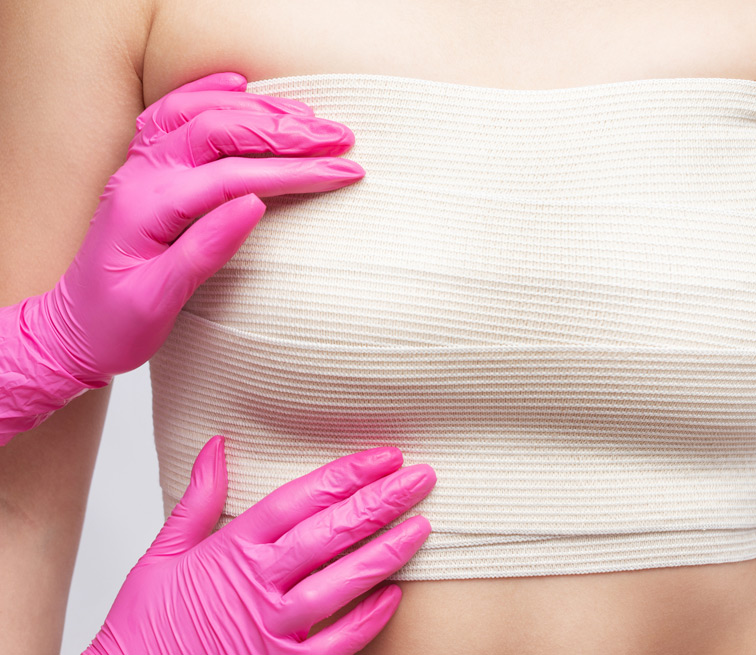
DIEP flap breast reconstruction surgery uses a patient’s own abdominal skin and fat to reconstruct a natural-looking breast after mastectomy. DIEP stands for Deep Inferior Epigastric Perforator, referring to the blood vessels that are used in the procedure. Unlike traditional flap methods, DIEP flap surgery preserves the abdominal muscles, reducing the risk of abdominal weakness or hernia. The tissue is transplanted to the chest to create a new breast mound, ensuring a more natural feel and appearance. Unlike traditional breast reconstruction methods that use implants, the DIEP flap procedure utilizes the patient’s own tissue, typically from the lower abdominal wall, to create a new breast. This is the same tissue that is removed in a “tummy-tuck.”
Benefits of DIEP Flap Surgery
DIEP flap surgery offers several benefits, including a natural look and feel of the reconstructed breast, as the tissue comes from the patient’s own body. The procedure also preserves abdominal muscles, reducing the risk of complications such as muscle weakness and hernia. Overall, DIEP flap surgery can significantly enhance physical and psychological well-being, contributing to a sense of normalcy and improved body image after mastectomy.
Although technically more complex than other breast reconstruction techniques, the potential benefits of DIEP flap breast reconstruction can be significant. Compared to the TRAM flap procedure, the DIEP option offers:
- Less post-surgical pain
- Better abdominal wall strength
- No abdominal hernia
- Abdominal wall appearance equivalent to abdominoplasty (tummy tuck)
- Nearly every woman is a viable candidate
- All natural technique for reconstruction
How DIEP Flap is Done
DIEP flap surgery involves transferring skin and fat from the lower abdomen to the chest to reconstruct the breast. The surgeon begins by making an incision in the lower abdomen to access the tissue and blood vessels. The tissue is carefully detached, preserving the deep inferior epigastric perforator blood vessels. The tissue is then transplanted to the chest, where the surgeon reconnects the blood vessels to those in the chest using microsurgery techniques. This ensures that the tissue remains healthy and viable. The abdominal incision is closed, and the transplanted tissue is shaped to form a new breast mound.
DIEP flap procedures typically last from 4-6 hours for a single reconstruction and 7-8 hours for a bilateral breast reconstruction. The hospital stay is generally 4-5 days for unilateral reconstruction, and five days for bilateral DIEP flap breast reconstruction.


Who DIEP Flap Surgery is For
DIEP flap surgery is suitable for women who have undergone a mastectomy and seek a natural-looking breast reconstruction using their own tissue. It is ideal for those who prefer to avoid implants and desire a reconstruction that feels and looks more natural. Candidates should have sufficient abdominal tissue for the flap and be in good overall health to undergo a lengthy and complex surgical procedure.
Surgical Process
The treatment process for DIEP flap surgery begins with an initial consultation with your plastic surgeon to discuss medical history, goals, and expectations. The surgeon will assess abdominal tissue to determine suitability. The operation can often be done at the same time as the mastectomy, or in a delayed fashion, after the mastectomy and any additional cancer treatment. On the day of surgery, general anesthesia is administered. The surgeon makes an incision in the lower abdomen, harvests the tissue and blood vessels, and transplants them to the chest, where blood vessels are reconnected using microsurgery techniques. The abdominal incision is then closed, and the new breast is shaped.



Q: What is the recovery time after DIEP flap surgery?
A: Recovery time varies, but most patients can resume normal activities within six to eight weeks. Full recovery and final results may take several months.
Q: Are there risks associated with DIEP flap surgery?
A: As with any surgery, there are risks including infection, bleeding, flap failure, and complications related to anesthesia. Choosing an experienced surgeon and following post-operative care instructions can minimize these risks.




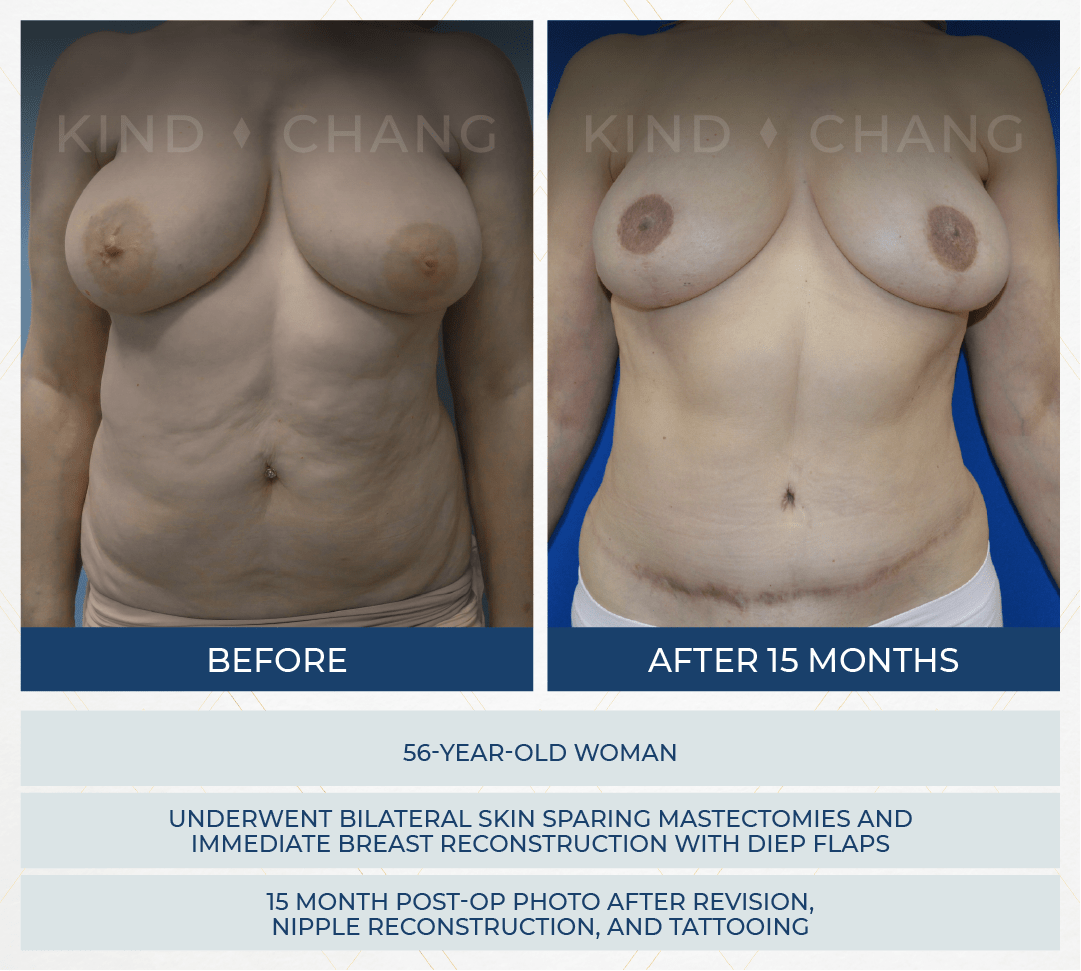
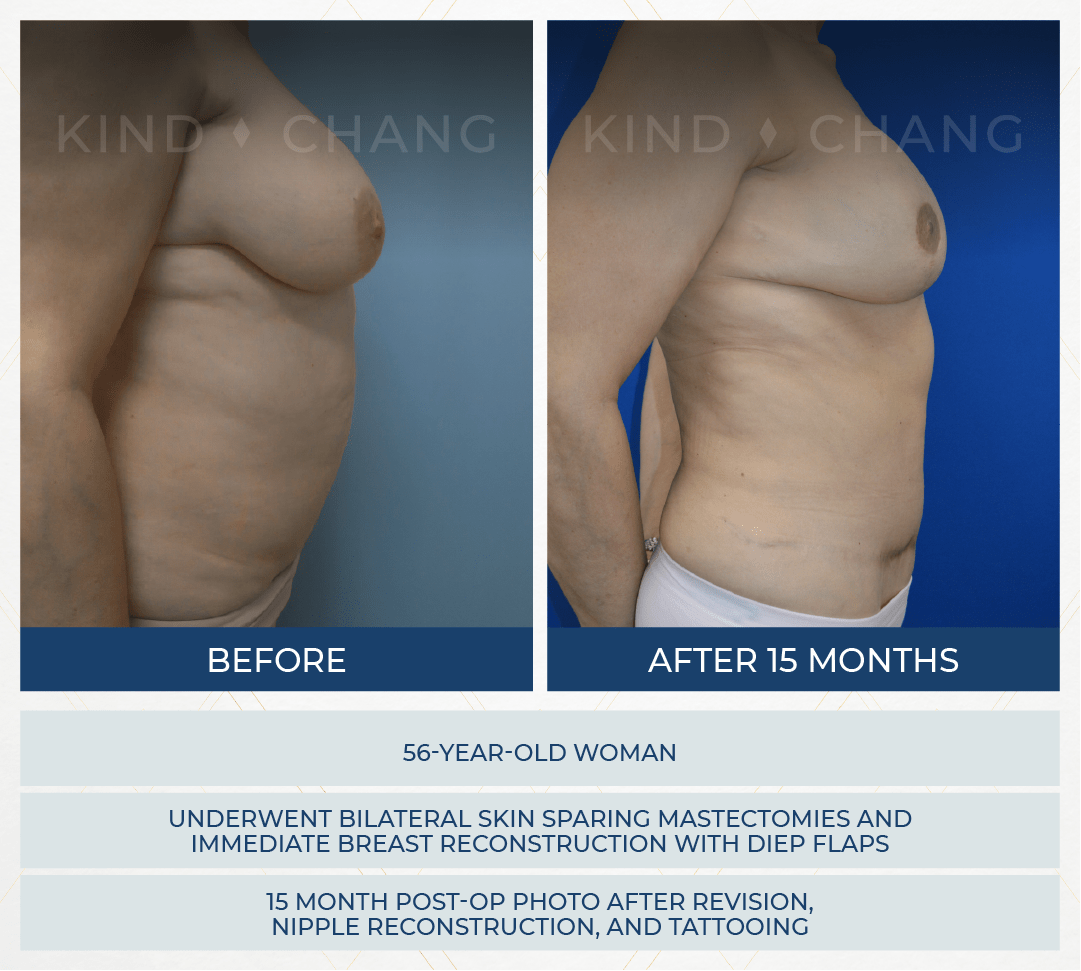
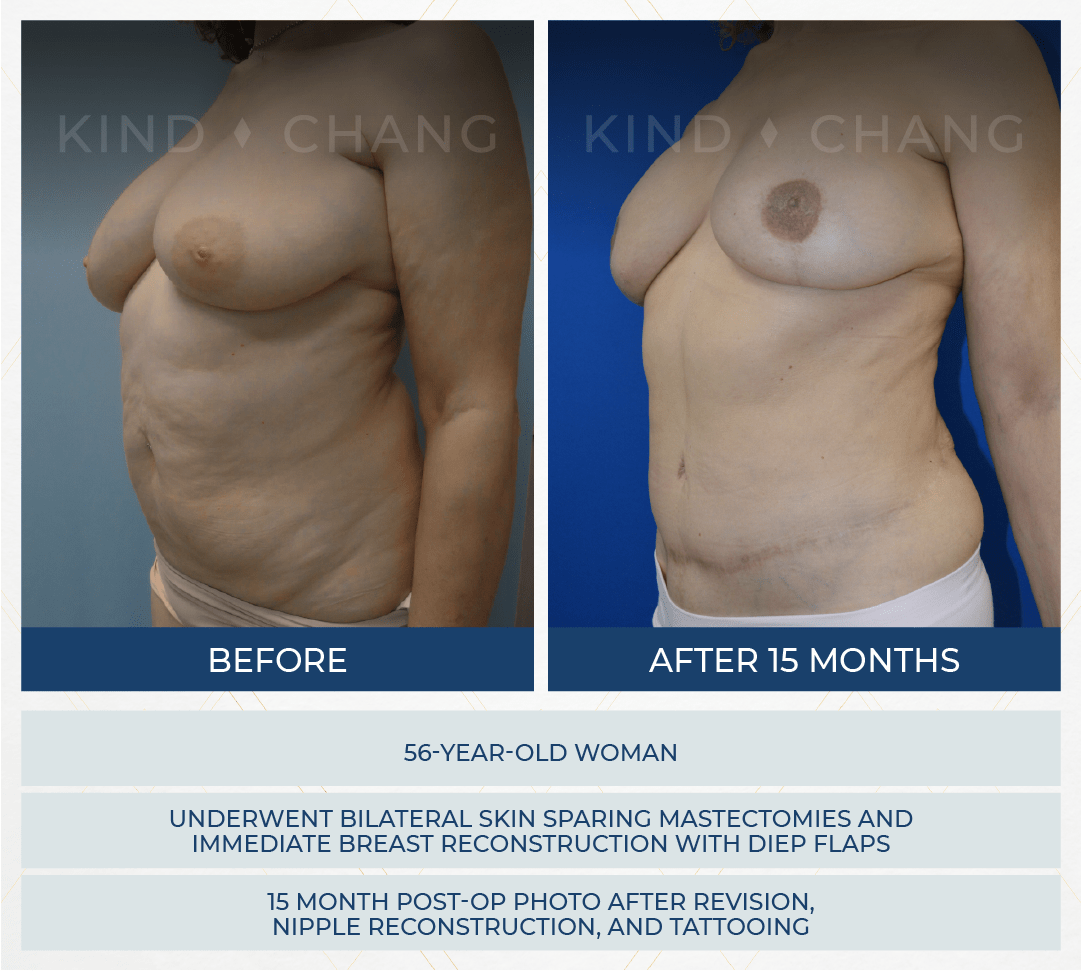
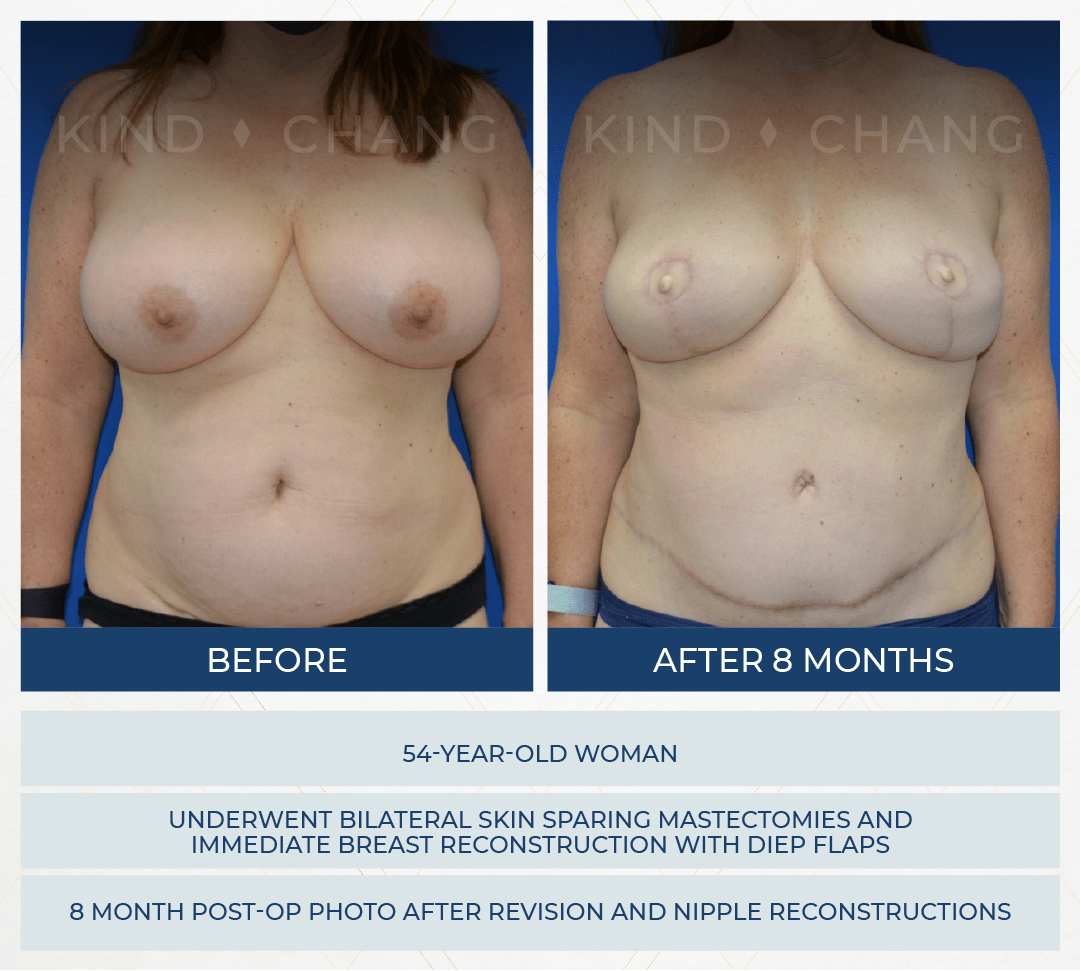
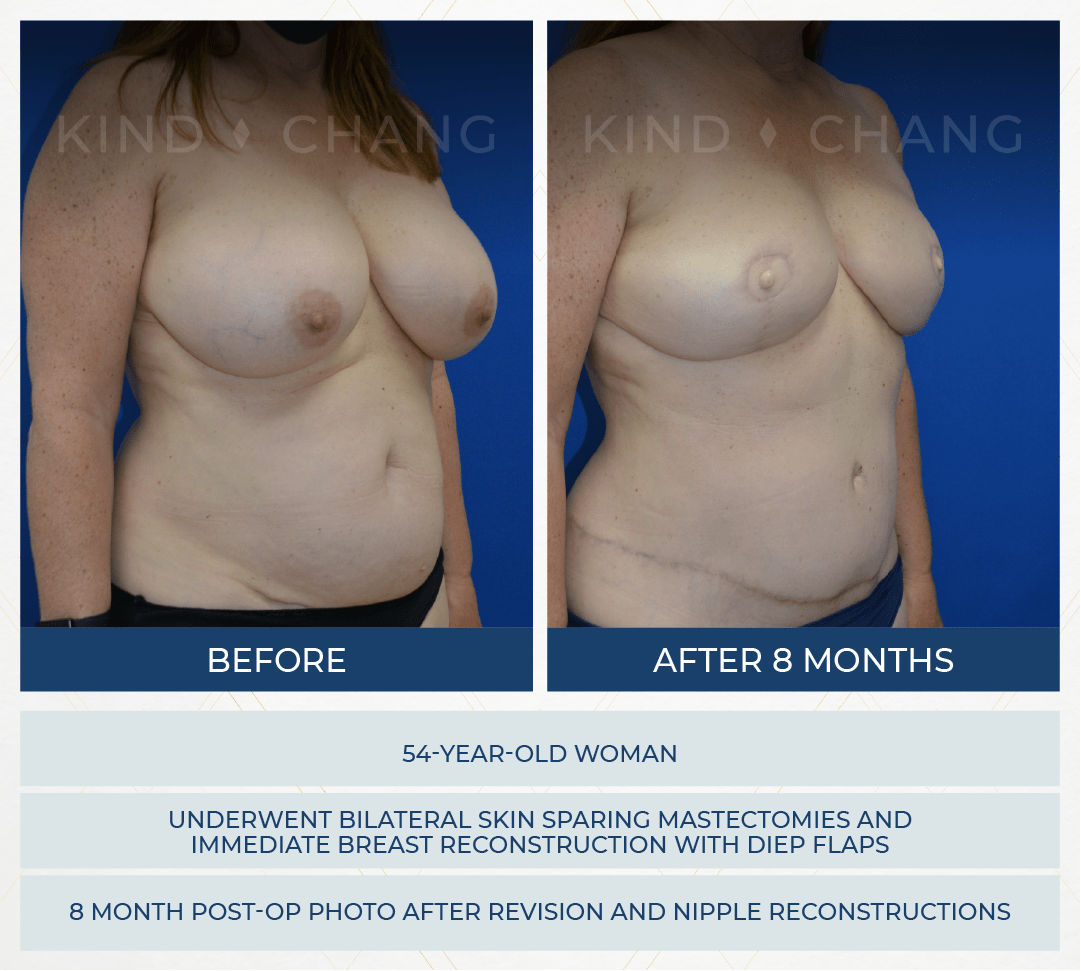
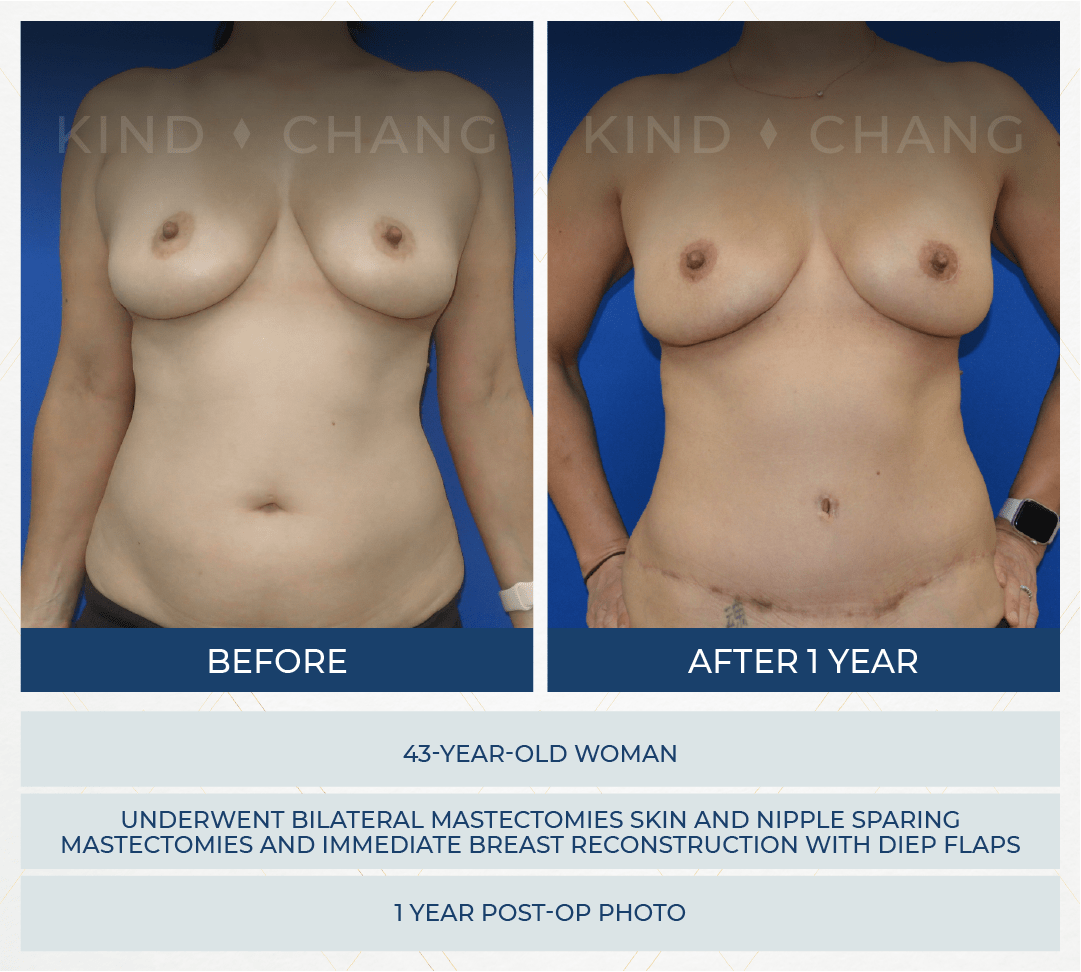
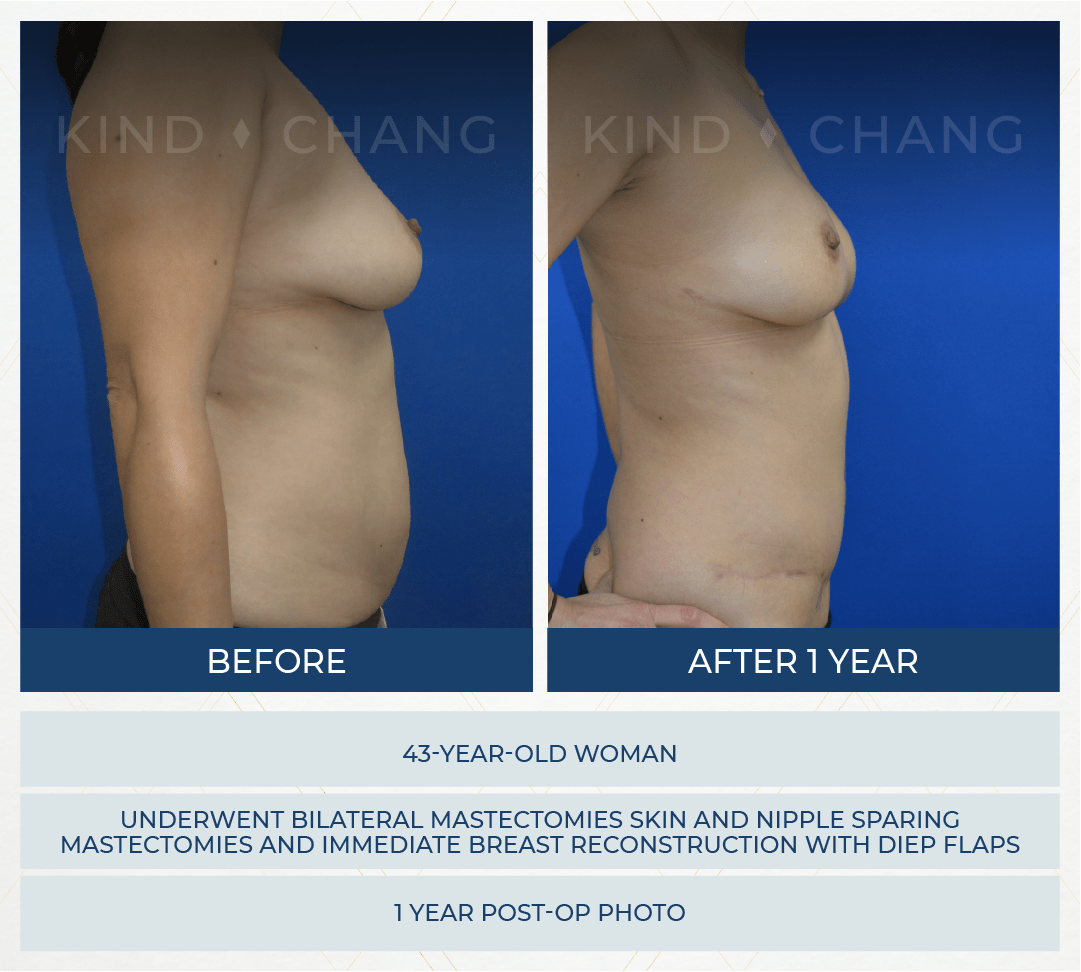
DISCLAIMER: Before and after results are NOT a guarantee that your results will be the same or similar. Each patient’s results will be different. Your results will vary from other patient’s results.
